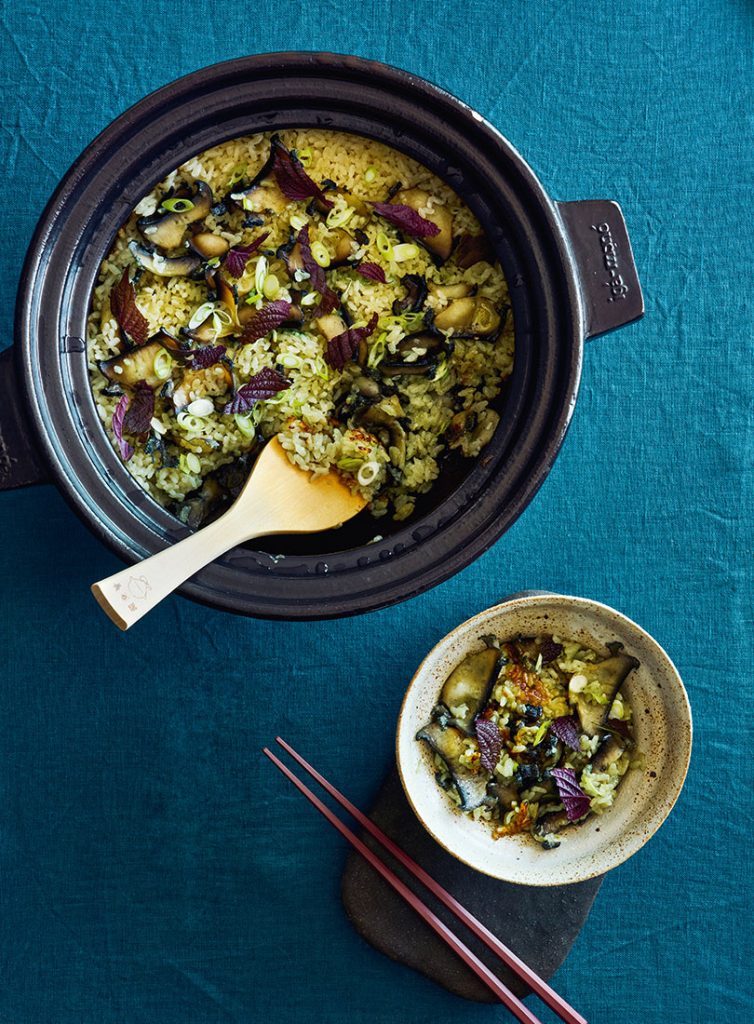Clay Pot Rice With Pāua
Pim Techamuanvivit

Serves
4Preparation
30 minsCook
14 minsMarinate
4 - 6 hrsRest
20 minsIngredients
| 2 pāua | |
| ¾ cup sake plus 1 tablespoon extra | |
| 1 small shallot, chopped | |
| 1-2 cloves garlic, chopped | |
| 2 tablespoons butter | |
| 1½ cups Japanese short grain rice, rinsed and drained | |
| 1½ cups light chicken stock or dashi | |
| 1 tablespoon mirin | |
| 2 tablespoons soy sauce (or 3 tablespoons light soy sauce such as shiro shoyu) | |
| 2 tablespoons chopped spring onions, to garnish | |
| a few torn shiso leaves, to garnish |
This recipe is not Thai, but it’s a dish I do often while I’m in Auckland because I can easily find very fresh pāua. I usually get them shipped directly from the fantastic Tora Collective, or from the tank at the Auckland Fish Market. Every friend I’ve made this for has asked – no, demanded – a recipe, so I thought I’d do this here. Ideally you’ll need a Japanese donabe pot (capacity 2 litres) or a thick clay pot. You can also use a medium-sized enamel or cast-iron pot (such as a Le Creuset) that can hold heat well. Unfortunately a thin stainless steel pot won’t work.
View the recipe collection here
Instructions
| 1. | Slice the pāua as thinly as you can and put into a small non-reactive container with ¾ cup sake. |
| 2. | Give it a few squeezes to massage the sake into the pāua meat. |
| 3. | Cover and let it rest in the fridge for 4-6 hours to tenderise. |
| 4. | One hour before serving, place the clay pot over a medium heat and sauté the shallot and garlic in the butter until they become translucent and fragrant. Turn the heat off. |
| 5. | Add the pāua to the pot, discarding the marinade liquid. |
| 6. | Add the rice and the liquid ingredients, stirring well to combine. Let it sit (off the heat) to soak for 20 minutes. |
| 7. | After soaking, put the pot on a medium-high heat and cook for 14 minutes. Turn the heat off. |
| 8. | You’ll be so tempted to open the pot right now – do not give in to the temptation. Let the pot sit, undisturbed, for 20 minutes. |
| 9. | Bring the pot to the table with the garnish in a small side bowl. |
| 10. | Make sure all your dinner guests are paying attention, open the pot and let everyone take in the aroma, sprinkle the garnish on top and serve. |
| 11. | The rice is lightly seasoned on purpose; should you prefer it saltier you can always add soy sauce at the table. |
| 12. | If it is seasoned too heavily from the beginning, there’s no fixing it at the end! |
Recipes & food styling Pim Techamuanvivit / Portrait & recipe photography Tony Nyberg / Restaurant photography Adahlia Cole, Anson Smart
